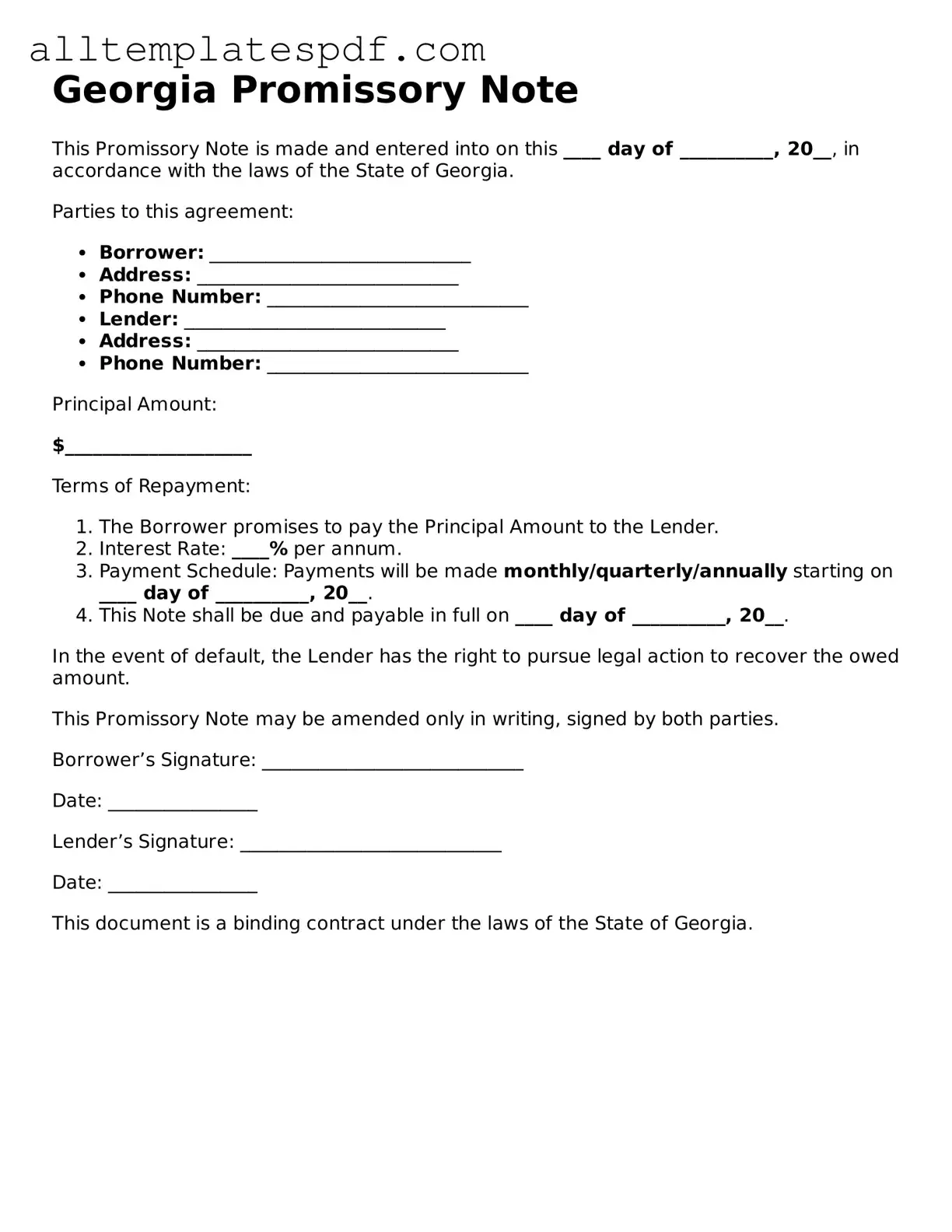Blank Promissory Note Template for the State of Georgia
A Georgia Promissory Note is a written promise from one party to pay a specific amount of money to another party at a defined time or on demand. This legal document outlines the terms of the loan, including interest rates and payment schedules, ensuring clarity and protection for both the borrower and lender. If you're ready to formalize a loan agreement, consider filling out the form by clicking the button below.
Open Editor
